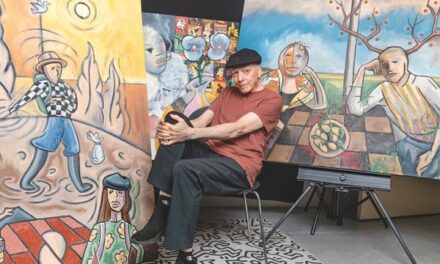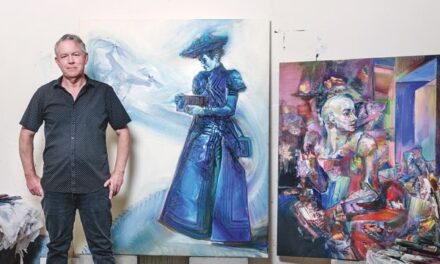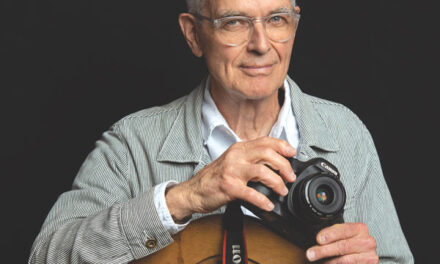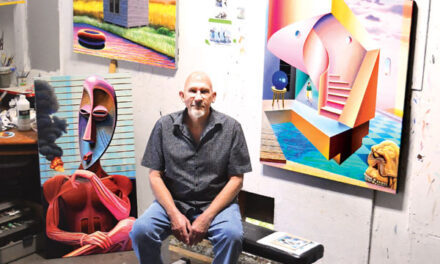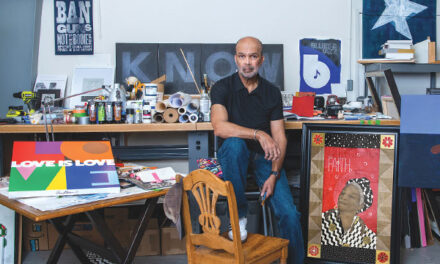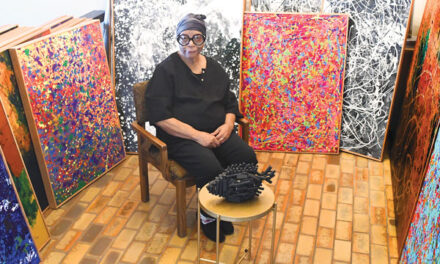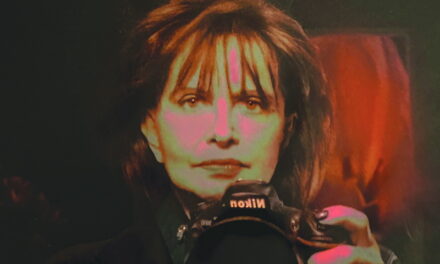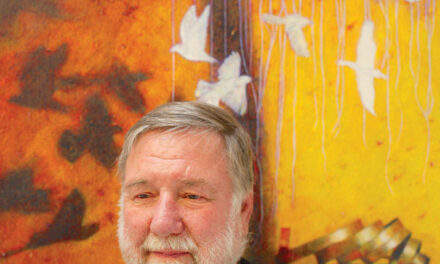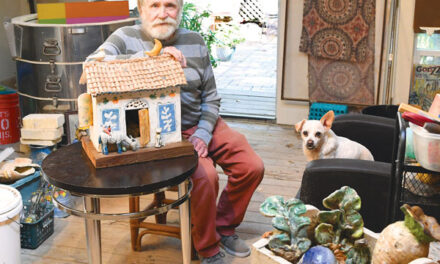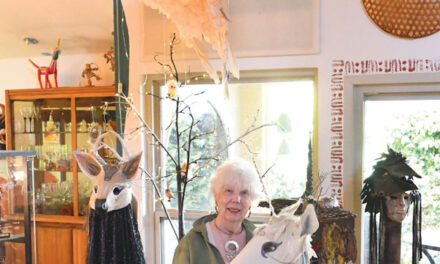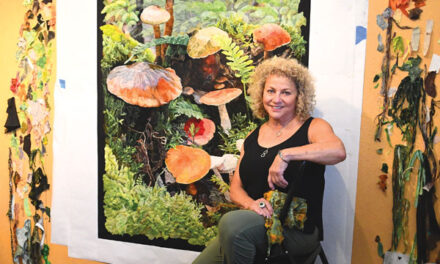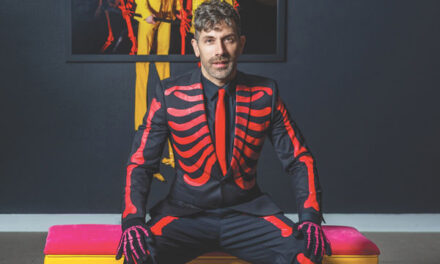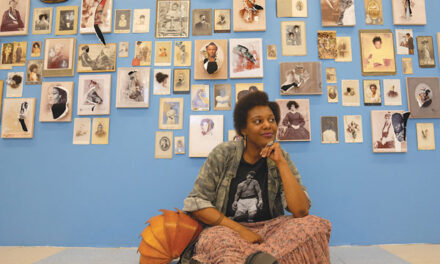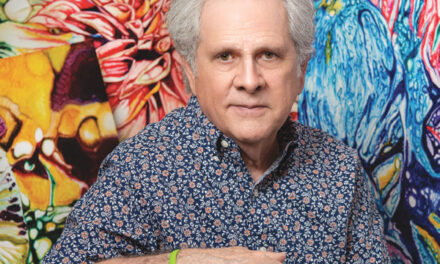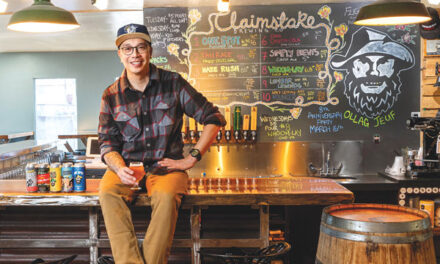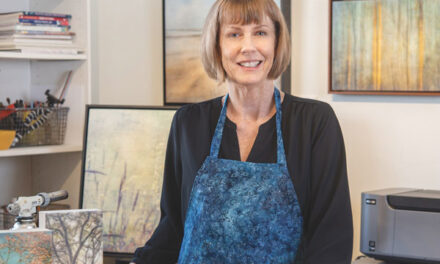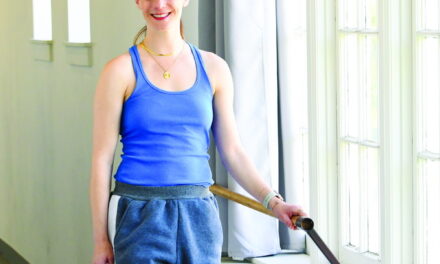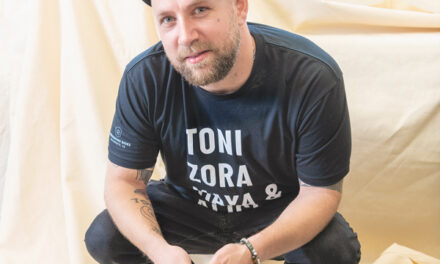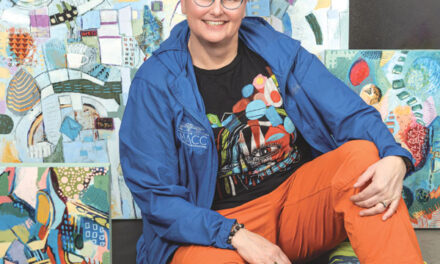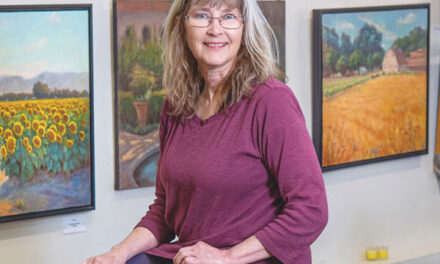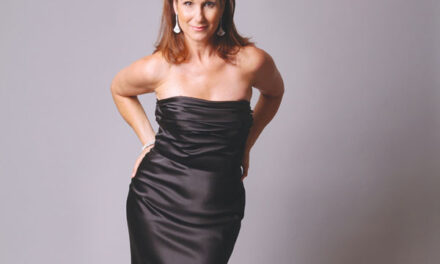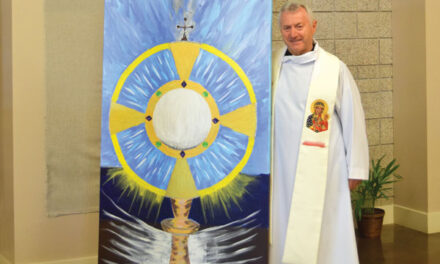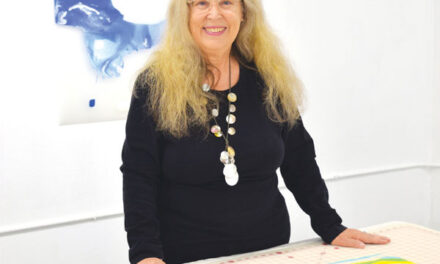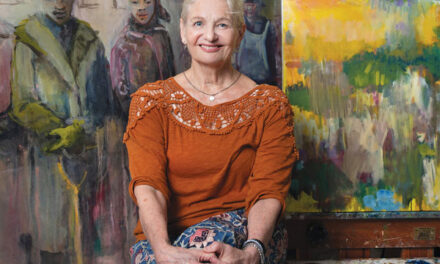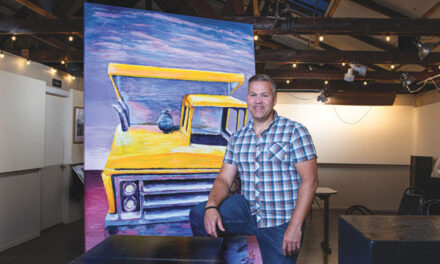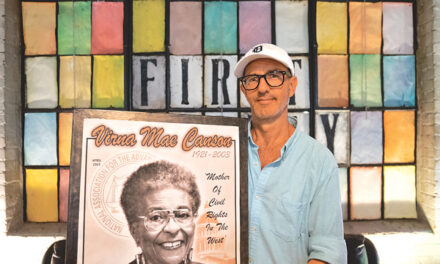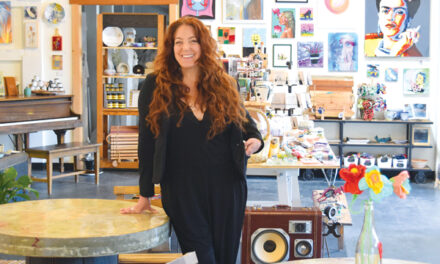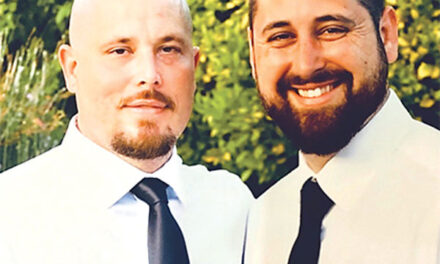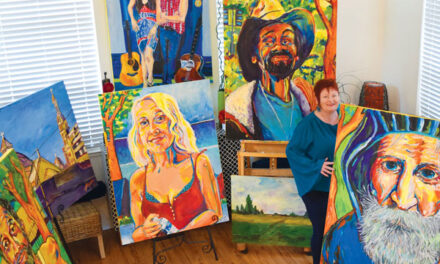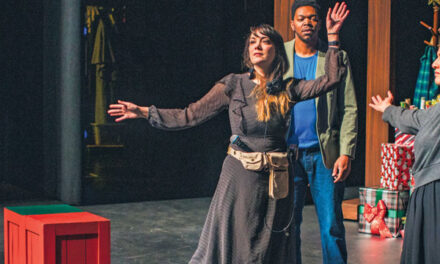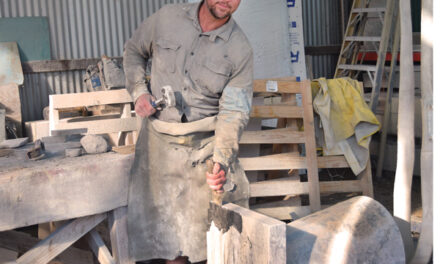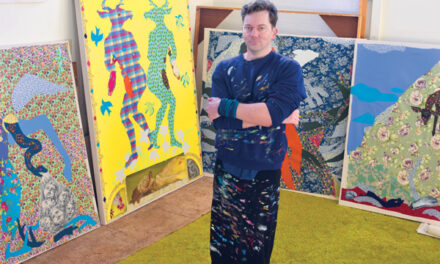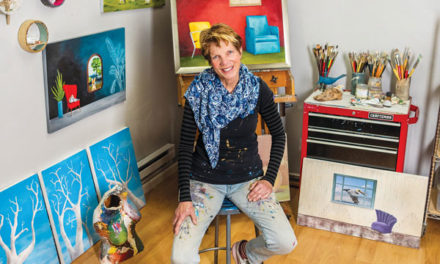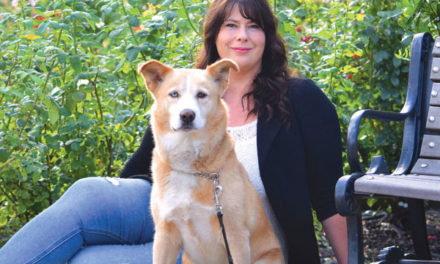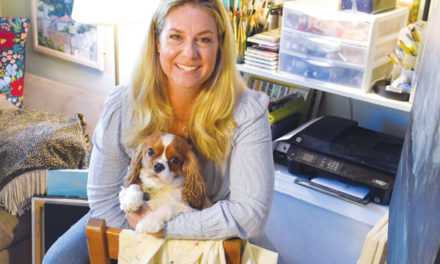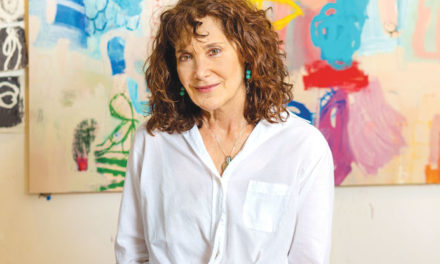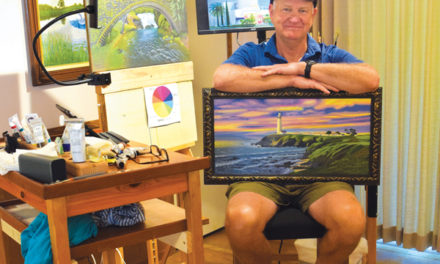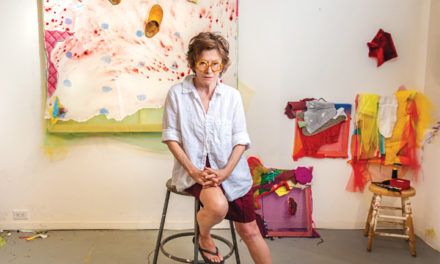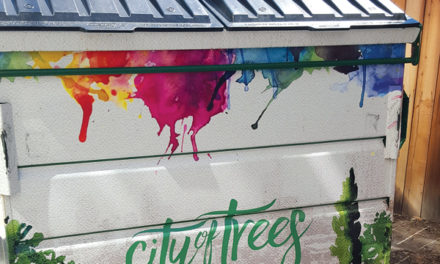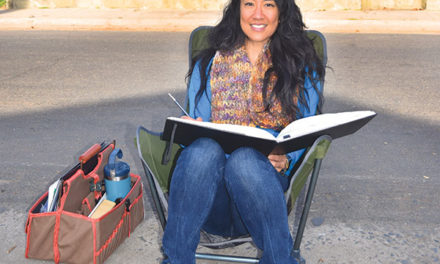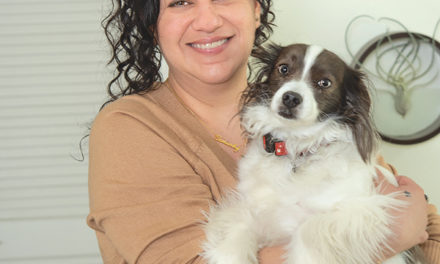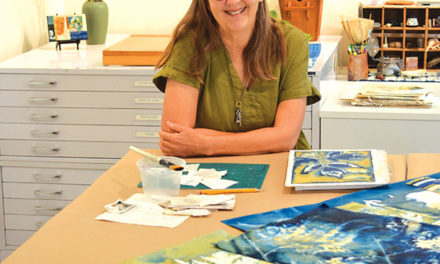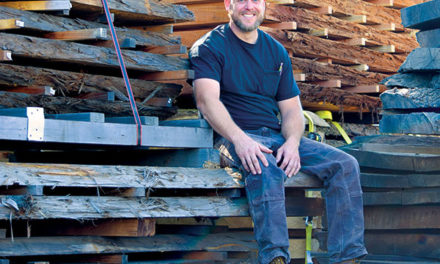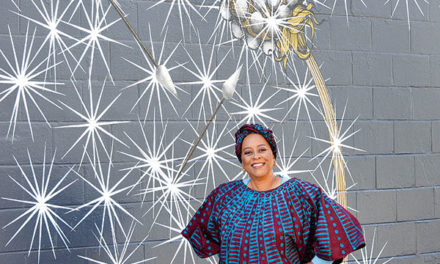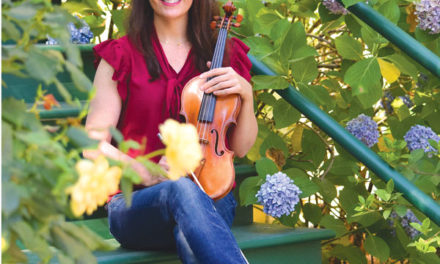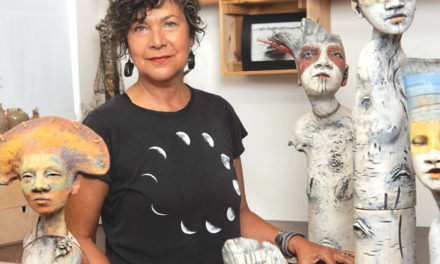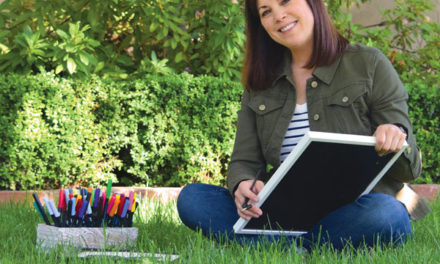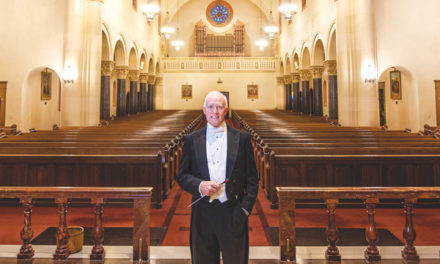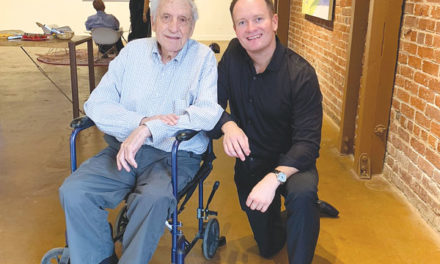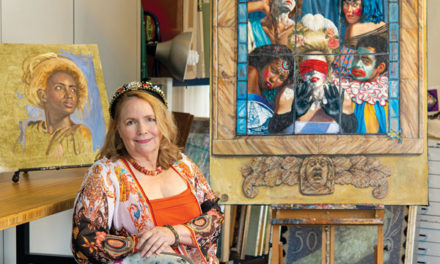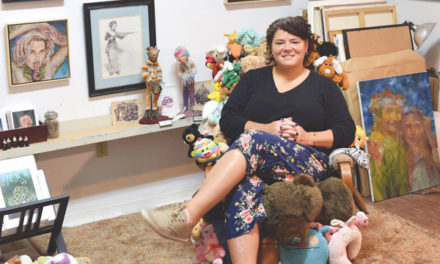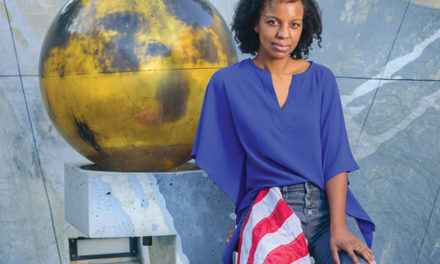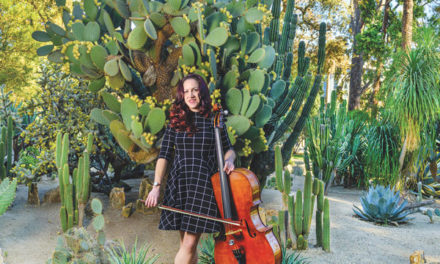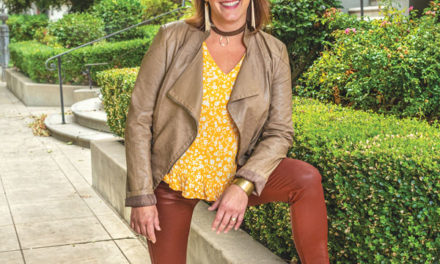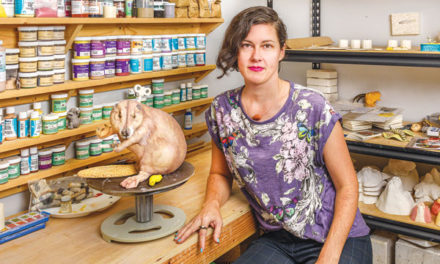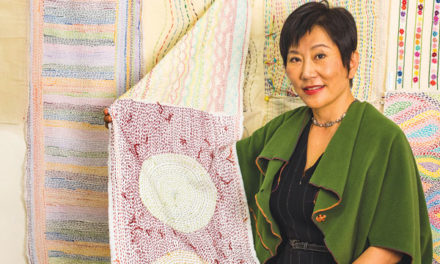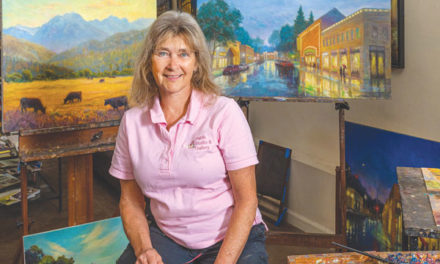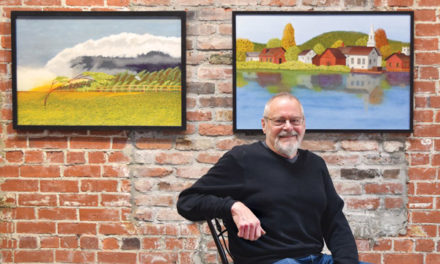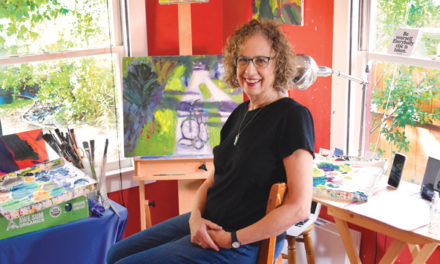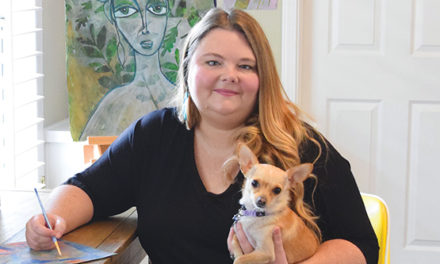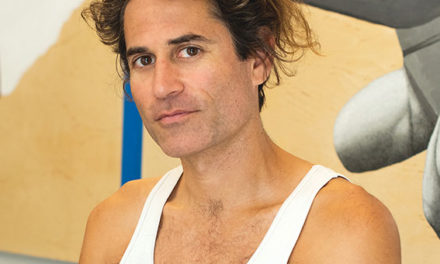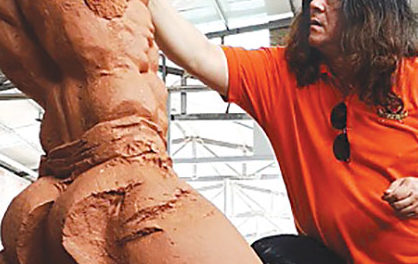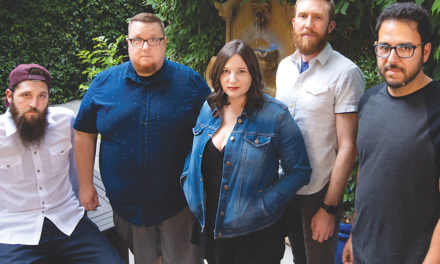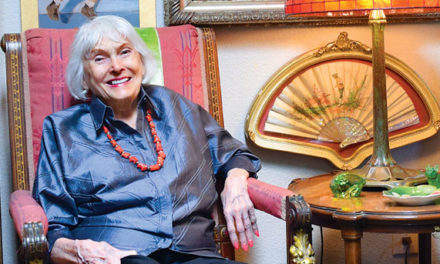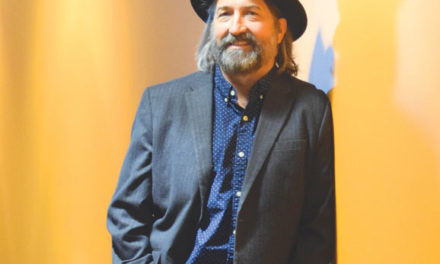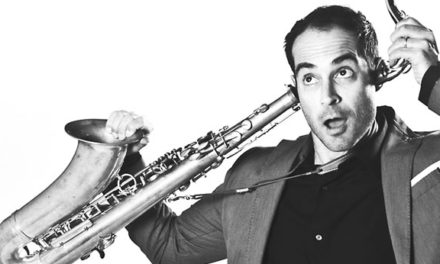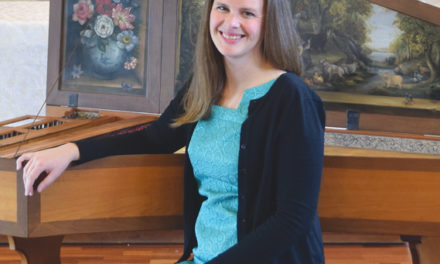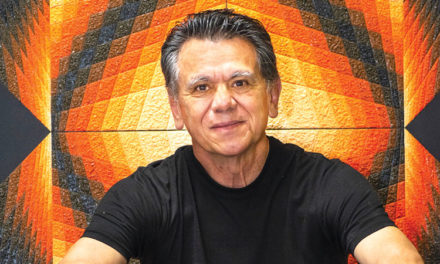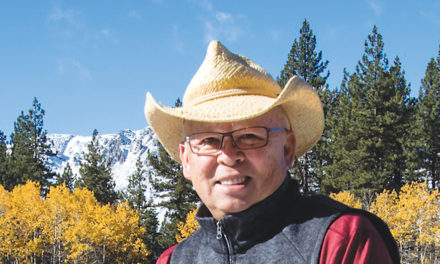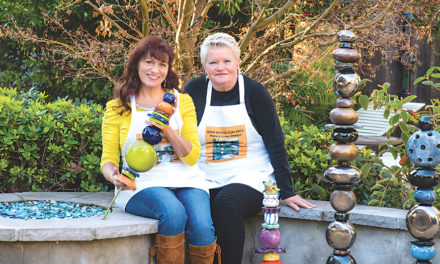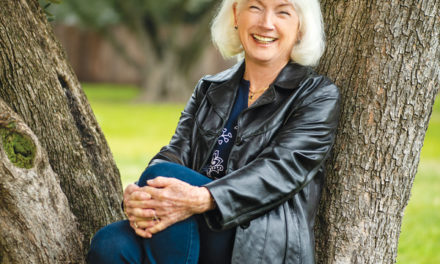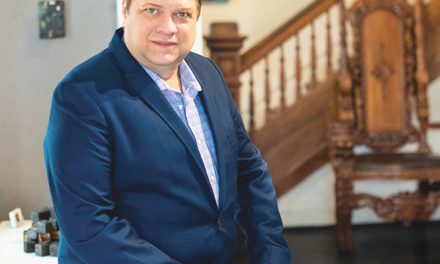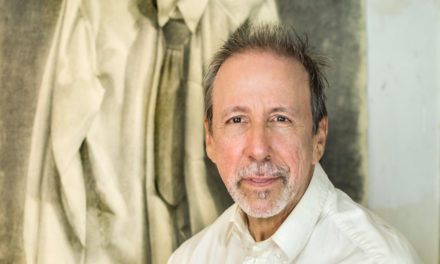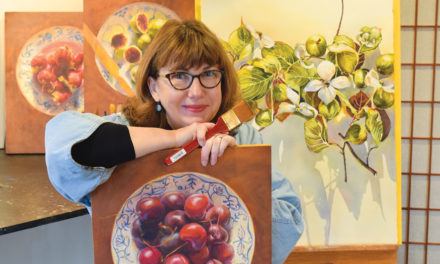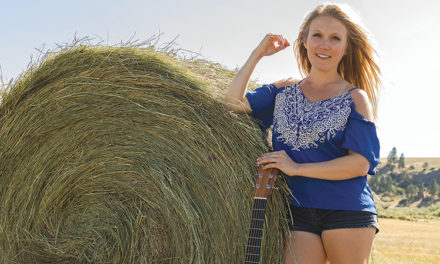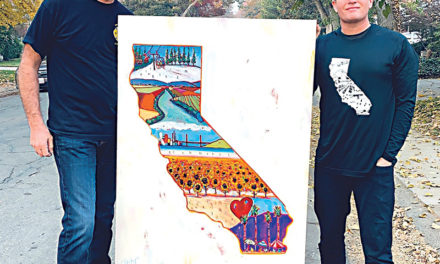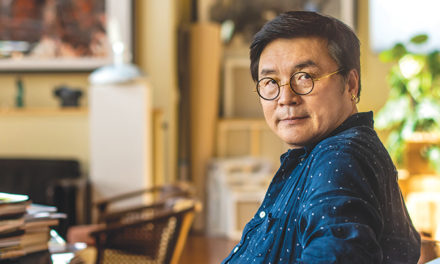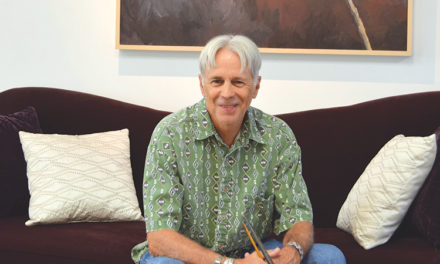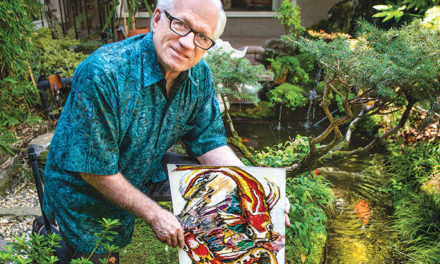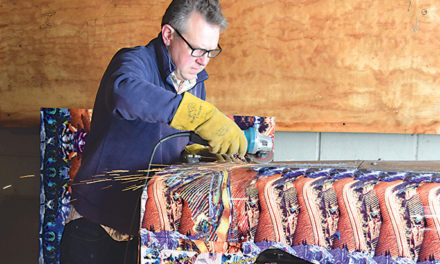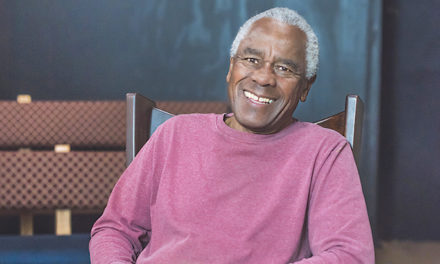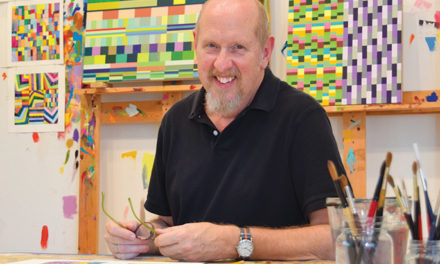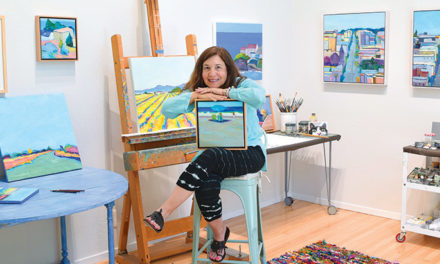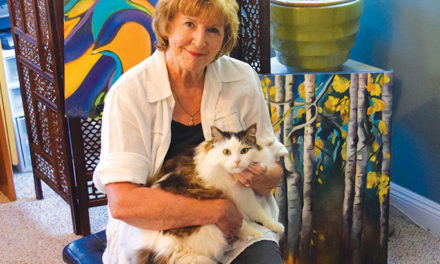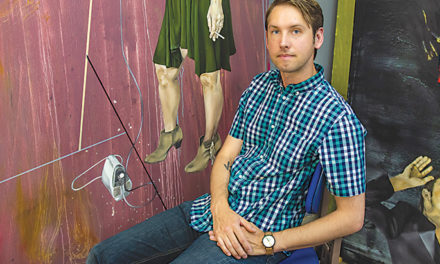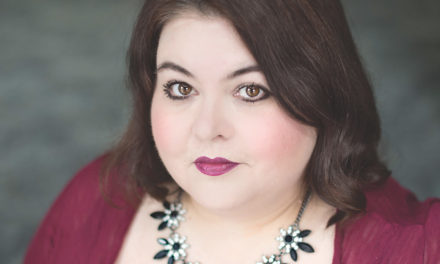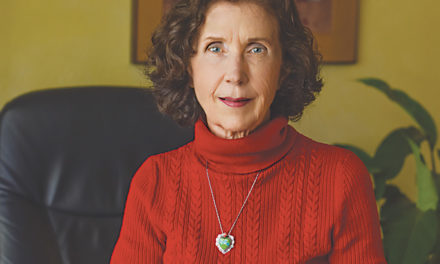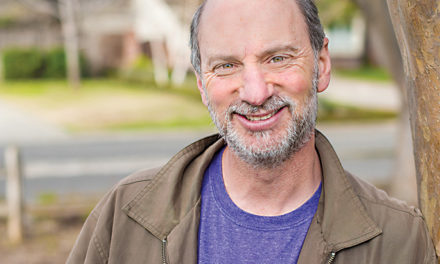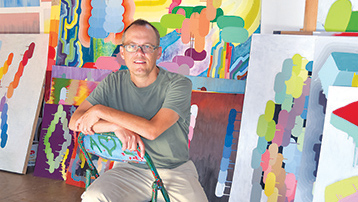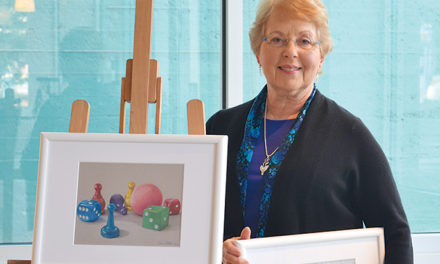Nationally Renowned, Humble at Home
Iconic Local Artist Gerald Walburg Has a History Few Neighbors Know
By Cecily Hastings
September 2018
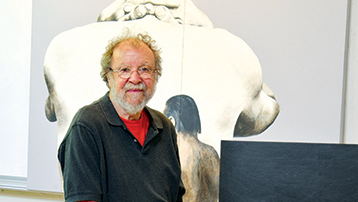
Gerald Walburg is one of Sacramento’s most talented and notable artists. The trouble is that over his long and productive career his local profile hasn’t kept up with his national one. I’m hoping to change that.
While you might not know Gerald—or Jerry, as he is known—you have undoubtedly seen his monumental public artworks.
His largest and most prominent local sculpture is the 40-foot “Indo Arch,” located at 4th and K streets. It was Sacramento’s first art installed under the Art in Public Places program, established more than 40 years ago.
The “Indo Arch” was controversial from the start. People called it phallic. Some said it was Islamic. They feared it would further endanger U.S. hostages then being held in Iran. I’ve always loved the arch, and am grateful the
community now embraces it. Then there is Walburg’s larger-than-life, nickel-rich bronze that he donated and installed outside the entrance to the Crocker Art Museum in 2013. As is often the case with Walburg sculptures, the elements form an open frame through which to see the world as well as the work.
Crocker Art Museum curator Scott Shields explains the piece was an important addition to the museum because on either end of the Crocker are sculptures by Bay Area artists. Shields felt it was important to have a Sacramento-based artist represented. “I made this piece with this site in mind,” Walburg says.
I first met Walburg a year ago when my friend Cheryl Holben introduced us. We were planning a 40th anniversary event for the Sacramento Metropolitan Arts Commission. Walburg’s extensive East Sac home, garden and studio property was the perfect venue for the private event.
I quickly discovered that Walburg, at 82, is an amazing talent, artist, craftsman, designer and thoughtful conversationalist—a true American renaissance man.
The day we first met, Walburg was dealing with his contractor and completing a full basement of the third home on his property. It turns out my husband and I had built a full basement in our new home in 2007. We had contracted it ourselves, so I knew all the details involved in construction. We hit it off by sharing basement design and building knowledge!
I was delighted to visit with him several times in the past year when attending small, private art shows he hosts for artists he admires.
Walburg is an East Bay native. While attending Oakland High School, he pursued a vocational rather than academic path. He was attracted to shop and drafting classes. After high school, he followed a friend to California College of Arts and Crafts. His father had been killed in World War II, and the funds from his father’s military survivor benefits paid the tuition.
Walburg was drawn to industrial design. He lacked the math skills for architecture, which was his first love. When his girlfriend became pregnant, Walburg dropped out and worked to support his marriage and child. He was 20 years old.
Living in San Francisco, he eventually resumed college and focused on academics while continuing to work. Two more children were born, and the Walburgs moved to Petaluma to be near his wife’s family. He pursued a variety of machine-shop jobs, with an emphasis on metal forming, sheeting, rolling, bending and lathing. These skills would later serve him well. In addition, he worked nights at an architectural office, drawing and drafting. Working hard, Walburg eventually bought a home for his family. There was no time for art.
With every experience, Walburg impressed his employers. He became a skilled draftsman, praised for his ability to visualize and depict three-dimensional objects and details.
After a divorce, Walburg moved back to San Francisco to pursue a degree at San Francisco State College. He also worked in engineering for Standard Oil. A summer college class in ceramics transformed his career objectives. “Clay got into my veins,” Walburg says.
Still without a degree, he switched to art, minoring in industrial design. Walburg was 29 when he finally graduated. Immersing himself in art, he gave up the idea of teaching, and began a master’s degree art program at UC Davis in 1965.
“It was a very exciting and energetic time at the art school with some impressive newly hired teachers, including Wayne Thiebaud, William Wiley and Bob Arneson, just to name a few,” Walburg says. “I was placed in a situation where I learned to question, challenge and develop philosophies and ideas of my own. This was truly education at its best.”
His ceramic work went beyond function and explored a connection to his love of drafting. His work trended geometric and minimal. He explored a wide variety of materials, including corten (or rusty finish) steel that has been a mainstay of his sculptures.
After graduating, he invested time and money into his own large-scale works. They were quickly purchased for permanent collections of prestigious museums. He considered, but later dismissed, the idea of moving to New York City.
Instead, he accepted a teaching positon at Sacramento City College. He continued to create art and experimented with sculptural illusions and materials, including watercolor. His work was praised by critics and became commercially successful on the world stage.
When offered a faculty position at Sacramento State, he moved and taught there for 37 years. One can only imagine the thousands of students his ideas and approaches influenced. He continued to produce dozens of major commissions from around the world. In 2007, San Jose State published a beautiful book on Walburg to accompany a major exhibition of his work.
On a recent visit, Walburg shared with me one recollection that was a bit shocking. In his early years, he explained, he had various relationships with Bay Area galleries to represent his artwork. Some worked out better than others. But one gallery owner made him a proposition he had to refuse.
“She wanted us to have a personal relationship, and then she’d represent me and promote me to stardom,” Walburg says. “I was single at the time, but wasn’t attracted to her. So I nicely told her I didn’t want to mix business with pleasure. I thought that would be the end of it.”
Walburg was wrong. The gallery owner became bitter and blackballed him among other major gallery operators. He was left with no viable gallery representation.
“I managed to create a vibrant career despite this,” he says. “But when the #metoo movement came into focus last year, it made me realize that it isn’t always just men using their power to abuse women. It sometimes happens the other way around. It clearly happened to me.”
Many decades later, the woman moved to Sacramento and he encountered her at an event. She admitted coolly that what she did to him was not fair. “It did make me wonder how my career might have been different without that unfortunate experience,” he says.
These days, Walburg and his lovely wife, Deborah, keep making improvements to their property. They grow vegetables, tend their garden, cook and produce (and drink) their own wine. With age, he has given up sculpture, but focuses now on painting and drawing. The couple have good health and a solid and joyful partnership.
But for a man whose early years were spent working so diligently with both his head and his hands, my hope is that Jerry Walburg is able to stay active and productive until the moment he leaves this earth. Sacramento is a much richer place because this artist made our community his home.
SECOND EDITION BOOK
After selling out of the first edition of our 2016 book “Inside Sacramento: The Most Interesting Neighborhood Places in America’s Farm-to-Fork Capital,” we have worked on an updated second edition this past six months. The new book is now available for purchase on insidesacbook.com and at local sellers listed in an ad in this month’s Inside. The second edition features about 30-percent new content and some great new features. I’ll write more about it next month. Join us on Sept. 28 for the Farm-to-Fork Festival on Capitol Mall for a book-signing event. Mention “Inside” and get a $5 discount on the new lower price of $29.99.
MORE ON THE BEE
In last month’s column, I mentioned the possibility of The Sacramento Bee ceasing print operations at some point in the future. Elaine Lintecum, the McClatchy Company’s vice president of finance and chief financial officer, took exception to my prediction and insisted the newspaper has no plans to curtail or eliminate its print editions. I consider this good news, as I would mourn the day if The Bee were to ever cease print operations.
Lintecum is an East Sac resident and longtime Inside reader. She has generously put three of her own homes on the Urban Renaissance Home Tour, which I organize to raise funds for the nonprofit management of the McKinley Rose Garden. We are thrilled that her beautiful, remodeled home will be featured on our 2018 tour Sept. 23.
Lintecum says there is no truth to “industry rumors” that The Bee’s print operations will wind down in the next year or two. She says McClatchy and The Bee are committed to serving print customers over the long term (as they have since 1857). She offered to send me annual circulation audits for The Bee, although these are not made public. Additionally, Lintecum explained the role of McClatchy regional editor Lauren Gustus, who I described as “the regional corporate editor.” Gustus edits The Sacramento Bee, plus five other McClatchy papers.
Finally, Lintecum offered to help me get the digital access I pay for with a print subscription. For all of which I say thank you.
HOME TOUR, ART STUDIOS, SOIL BORN, COVER ART
This month we are partnering to sponsor three great community events. On Sept. 23, we will sponsor the Urban Renaissance Home Tour featuring five lovely new and remodeled homes in East Sacramento. Proceeds will benefit Friends of East Sacramento, a nonprofit I co-founded to manage for the McKinley Rose Garden and Clunie Community Center. Visit sacurbanhometour.com or East Sac Hardware to purchase tickets.
We are also sponsoring the Sac Open Studios, the 13th annual, monthlong art event in September showcasing more than 150 emerging and established artists in their studios. The event is organized by Verge Center for the Arts. Tours take place over two weekends, Sept. 8-9 and Sept. 15-16. Visit vergeart.com.
Additionally, we will sponsor the Autumn Equinox Celebration fundraiser for Soil Born Farms with great food, wine and beer tastings on Sept. 15 at the farm’s historic American River Ranch. Visit soilborn.org.
Some of our cover art in coming months will feature the Inside Publisher’s Awards that we selected from artwork in the 2018 California State Fair Fine Art Competition.
We are happy to support these great events that truly reflect Sacramento at its best.
Cecily Hastings can be reached at publisher@insidepublications.com.



